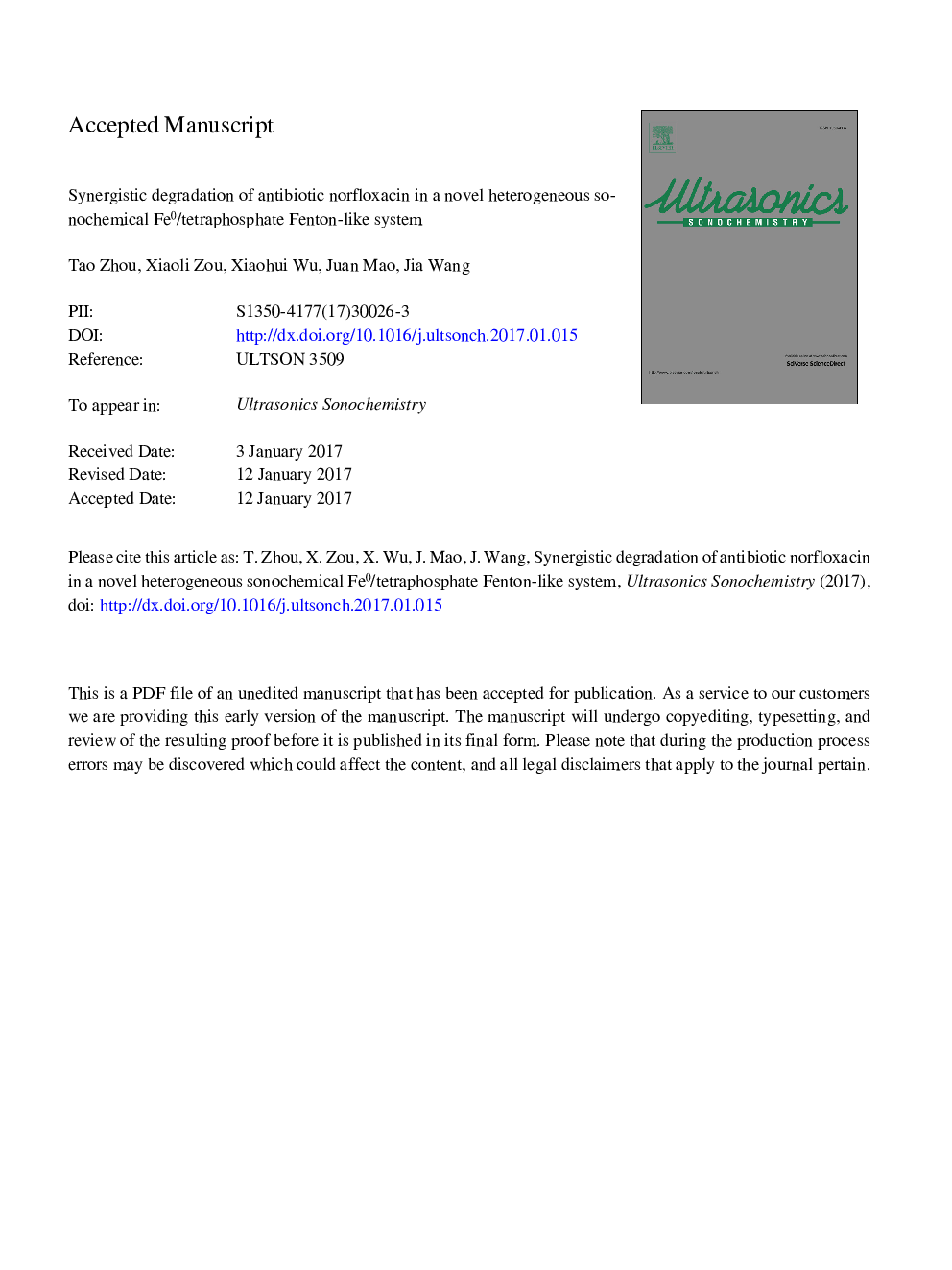| Article ID | Journal | Published Year | Pages | File Type |
|---|---|---|---|---|
| 5144816 | Ultrasonics Sonochemistry | 2017 | 27 Pages |
Abstract
In this study, synergistic degradation of antibiotic norfloxacin (NOR) was obtained in a novel sonochemical ultrasound/zero-valent iron/tetraphosphate system (US/ZVI/TPP). Compared to three common organic ligands (EDTA, EDDS, and DTPA), TPP could perform more excellently in activation of O2 to produce reactive oxidative species (ROS) and lead to efficient Fenton-like oxidative degradation of NOR in the sonochemical in situ chemical oxidation (ISCO) system. An optimized initial condition was obtained as 10Â mg/L NOR, 0.3Â mM TPP, 1Â g/L ZVI and initial pH 7, and the US/ZVI/TPP system would effectively degrade NOR with relative low dosage of ZVI and ligand as well as broad pH work range 3-9. It was found that three ROS (OH, O2â and H2O2) instead of OH only would participate in the NOR degradation, while the in situ generation of H2O2 during the series of Fe-TPP reactions should be more critical. Fourteen organic intermediates and four inorganic products were detected during the NOR decomposition, suggesting that two main degradation pathways would occur under OH oxidation via cleavage of the piperazine ring and defluorination of the benzene ring, respectively. Finally, an integrated reaction mechanism in the US/ZVI/TPP system was proposed including solid-liquid interfacial iron corrosion as well as bulk homogenous oxygen activation and Fenton reactions, wherein US would play mechanically and chemically promotional roles. Besides, triple-repeated treatments suggested the relative long-term re-usage of ZVI particles and low effluent dissolved iron (<0.6Â mg/L).
Related Topics
Physical Sciences and Engineering
Chemistry
Chemistry (General)
Authors
Tao Zhou, Xiaoli Zou, Xiaohui Wu, Juan Mao, Jia Wang,
